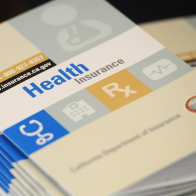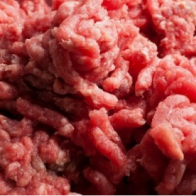 Sugar is an intimate part of our daily lives, whether we consume it consciously or not. Primarily, there are two different types of sugar: glucose and fructose. Your body processes each very differently. And unfortunately, one plays a larger role in maintaining an unhealthy diet.
Sugar is an intimate part of our daily lives, whether we consume it consciously or not. Primarily, there are two different types of sugar: glucose and fructose. Your body processes each very differently. And unfortunately, one plays a larger role in maintaining an unhealthy diet.
Let’s discuss the bad first.
Fructose
High fructose corn syrup (HFCS) is 55% fructose and sucrose is 50% fructose, which is high compared to normal corn syrup, but average when compared to cane sugar. The remaining percentage is glucose, which we’ll discuss later. Unfortunately, fructose is only metabolized by the liver and thus, a larger number of calories go through the liver processes and produce bad cholesterol. Moreover, this results in a higher production of uric acid, which is believed to cause hypertension and high blood pressure.
It gets worse…
Fructose also alters the way your brain recognizes consumption, causing your brain to resist leptin, the protein that keeps your appetite in check and your metabolism working efficiently. Hence, you keep eating without recognizing that you’re full.
You should stay away from any HFCS and sucrose products, including sugared beverages (any soda that basically isn’t labeled “diet”) and processed foods (i.e. pre-packaged dinners, fast food, and bread that isn’t 100% whole wheat). But have hope, not all sugar is bad.
Now for the (decently) good stuff.
Glucose
Glucose is a sugar that your cells use as a primary source of energy.When it’s consumed, it stimulates the pancreas to produce insulin, your brain notices, and subsequently tells you that you’re less hungry. Unlike HFCS and sucrose, your brain knows to tell you to stop eating when you’ve had enough. But glucose doesn’t come without its consequences. It’s also been linked to Very Low Density Lipoprotein (VLDL), which causes cardiovascular disease. 1 out of 24 calories from glucose transforms into VLDL. That’s actually not a lot, but the thing is: glucose is not the only thing that you consume that produces VLDL.
What foods naturally contain glucose? The sap of most plants that grow grains, fruits, and vegetables. To give you a list: cherries, grapes, dried apricots, dates, raisins, honey, sweet onions, cabbage, squash, asparagus and lettuce. If you stick to these, you’ll primarily get the good stuff that glucose has to offer. On the contrary, glucose syrup products (i.e. baked goods, processed tomato products, etc.) might get you in trouble since a lot of glucose’s good nutrients begin to disintegrate. Check for good sugar (glucose) versus bad sugar (fructose) using product nutrient labels. We promise it’s your bestfriend!
Reflecting upon your daily diet, what type of sugar do you mostly consume? Glucose or Fructose? Speak on it.
Read more posts celebrating Frugivore Month here.
Source: Lifehacker







I get the intention behind this post, but the science in it is pretty misleading.
The line between “good” and “bad” sugars shouldn’t be drawn between glucose and fructose. Over-consumption of products that are high in glucose will cause weight gain and insulin resistance, just like a diet that is high in products containing HFCS. In addition, fruits and vegetables are rich sources of fructose, not just glucose…it’s called fructose in the first place because it’s the main carbohydrate in unprocessed produce.
Maintaining a healthy diet and avoiding obesity, Type II diabetes, etc. requires paying attention, not to glucose/fructose ratios, but to the levels of processed sugars in your food. Simple carbohydrates unload themselves into your bloodstream quickly, causing a ‘sugar high’ followed by a rapid crash and more carbohydrate cravings. Eating large amounts of fructose OR glucose will exacerbate that cycle and mess with your body’s insulin levels. Staying healthy requires that you eat unprocessed foods like fruits, veggies and whole grains, which have large amounts of long-chain carbohydrates and fiber. Those will keep you full and take longer to digest, releasing sugar into your body at a much more constant rate. High fructose corn syrup is bad for you because it’s digested quickly and doesn’t keep you full, not because it contains fructose.
@Jasmine: Thank you Jasmine…your comment really explained a lot and includes great information that should’ve been included in the article. I was a little confused by the beginning of this article, because I was always taught that fructose comes from fruit and vegetables. Fructose isn’t necessarily bad.